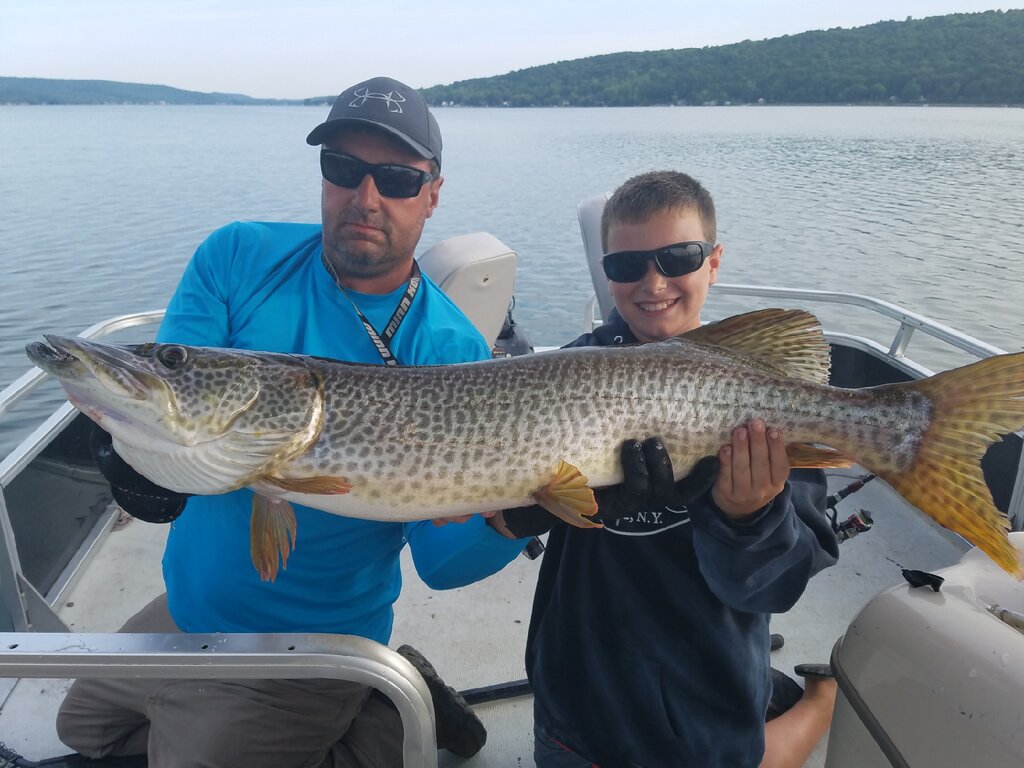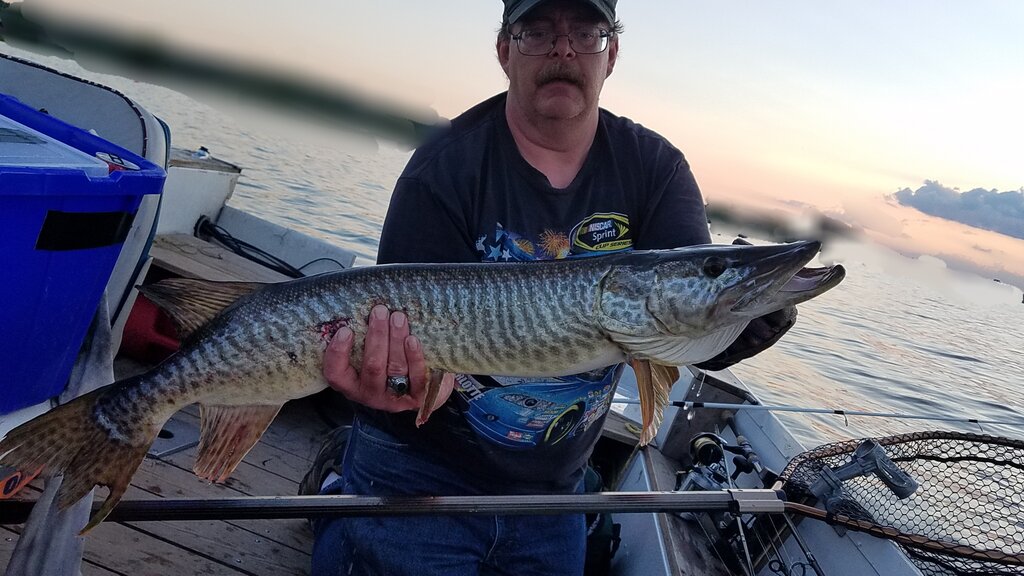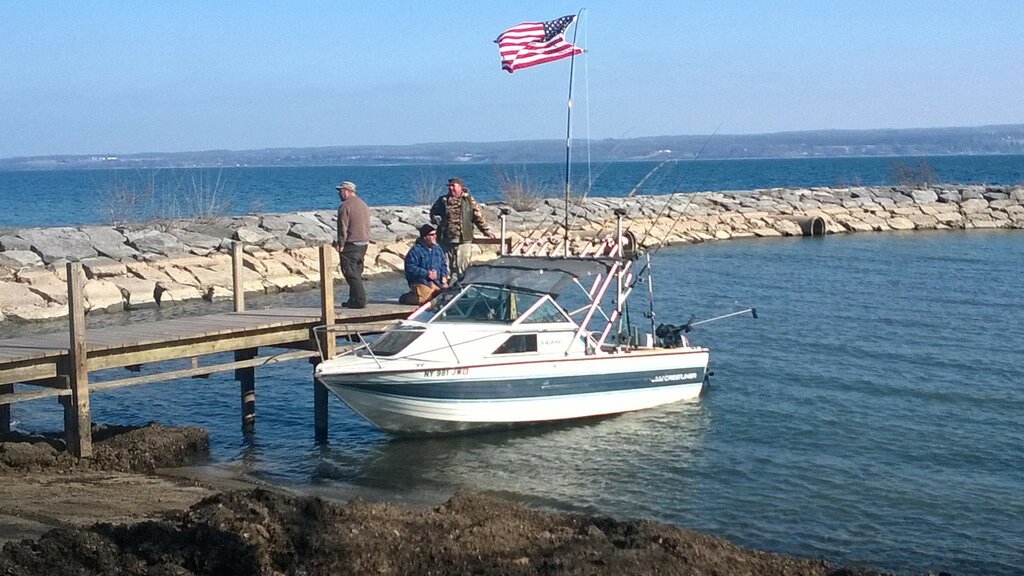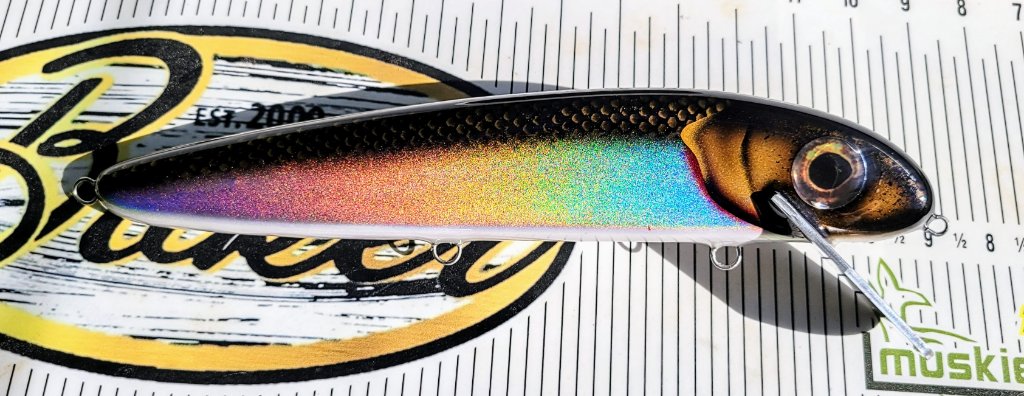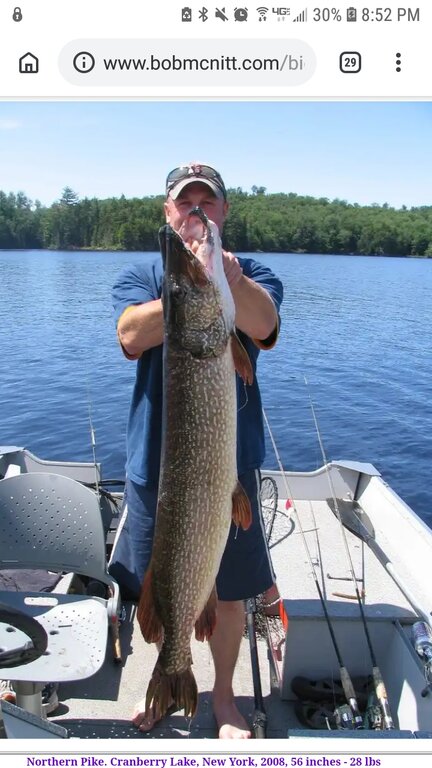

tmag
Members-
Posts
66 -
Joined
-
Last visited
Everything posted by tmag
-
What @justtracytrolling and @White Wolf is sound advice. Knipex are great and I 2nd that recommendation. Releasing fish without pics is also a good idea especially if you already have plenty of pics of similar fish. For my part, I always approach a fish from the tail first (i.e. fish don't swim or jump backwards). You can avoid getting hooked yourself this way and, yes, I've ended up with hooks in my fingers or hand because it's natural to reach towards the head first. If you turn a fish to its back, they will become more docile. From there, you can usually get hold of the fish with one hand using a gill hold. There's plenty of info out there demonstrating / detailing the gill hold technique. https://www.fieldandstream.com/articles/fishing/2010/02/gill-plate-grab-catch-release-pike-without-net/ https://www.in-depthoutdoors.com/community/forums/topic/proper-hold-for-pikemuskie/ https://www.outdoorhub.com/how-to/2017/03/10/video-properly-hold-muskie/ I tap most of the barbs down on my hooks. It's much easier to unhook a fish as well as to unhook yourself. However, you will still find circumstances wherein a fish is deeply hooked & may require the cutting of the hooks. For example, if a treble is somehow wrapped up in the gills, just cut the hooks. The smaller pieces usually drop out the sides of the gills and the lure / main hook shank is released. As such, having jaw spreaders can also be very helpful.
-
That's a nice one. Congrats! I like the 2nd picture better than the first. Trying to be helpful: https://muskie.outdoorsfirst.com/board/forums/thread-view.asp?tid=96369 scroll down to the pike photo / section: https://www.northernontario.travel/northeastern-ontario/how-to-properly-hold-a-fish https://www.in-depthoutdoors.com/community/forums/topic/proper-hold-for-pikemuskie/ and from (https://www.sageflyfish.com/redneck-musky): "Musky need to be kept horizontal. The vertical, gill plate hold that we see in so many old faded pictures is not good for the fish. A big heavy fish is not supposed to be held that way; it puts a ton of stress on all the internal organs and can lead to killing a fish."
-
-
-
-

Pike Behavior - Head/Eyes out of the water
tmag replied to Traveling Circus's topic in Musky, Tiger Musky & Pike (ESOX)
-

Pike Behavior - Head/Eyes out of the water
tmag replied to Traveling Circus's topic in Musky, Tiger Musky & Pike (ESOX)
-
-
-

Cayuga Dean's Cove Launch with Low Lake Level
tmag replied to Reel Doc's topic in Finger Lakes Discussion
-

Cayuga Dean's Cove Launch with Low Lake Level
tmag replied to Reel Doc's topic in Finger Lakes Discussion
-

Cayuga Dean's Cove Launch with Low Lake Level
tmag replied to Reel Doc's topic in Finger Lakes Discussion
-

Cayuga Dean's Cove Launch with Low Lake Level
tmag replied to Reel Doc's topic in Finger Lakes Discussion
-
-
That was great. Thanks for sharing.
-
-
-

One Musky Lure to Rule Them All...
tmag replied to BlueEye's topic in Musky, Tiger Musky & Pike (ESOX)
-
-
Chinook1981, nice info there and, yes, we need new & different regulations in NYS. In my opinion, it is a pity that, while NYS boasts the North American record pike of 54" / 46 lb. out of Sacandaga many years ago, our regulations do not support good pike fishing. We shouldn't need to go to Canada for such an experience. On another note, considering the North American record mentioned above, I find the dimensions of the fish in question to be doubtful. If that fish was 56", it would probably have been heavier. More than likely, there is a typo in there (i.e. 46" and 28 lb. ??) Those dimensions would make good sense.
-
-
A simple web search yields some interesting results: http://www.adkforum.com/showthread.php?t=10666 http://www.icefishin247.com/forum/index.php?topic=10382.0 http://northcountrynow.com/news/cranberry-lake-man-reels-274-pound-northern-pike-weeks-last-chance-ice-fishing-derby-079312 http://www.bobmcnitt.com/bigNYpike.html These last two links go together: http://photobucket.com/gallery/user/jjessman/media/bWVkaWFJZDo1OTE4NjgzMw==/?ref= https://www.iceshanty.com/ice_fishing/index.php?topic=192099.0 Enjoy!
-
VHS was detected / confirmed in the Canal back around the time we reference but never "confirmed" in the lake proper, so to speak. The unfortunate thing was that there were so many sick pike caught but none gotten to the DEC. Historically, as a community of fishermen, I think we tend(ed) to assume the DEC was aware or knows about whatever may be happening on the water. The reality is that they are spread thin and they do need & want our feedback & participation. Presently, it would appear that, at minimum, Seneca Lake suffers from the following: -- Lamprey infestation which has significantly affected the trout fishery and could include the largest of pike which become coldwater dwellers after reaching a certain size -- Most likely, VHS has knocked out a significant portion of the esocid fishery (i.e. pike & pickerel) -- There has been an explosion of bait especially alewife. This, too, is a problem because alewife predate heavily upon perch fry and also contain the thiaminase enzyme which negatively affects trout growth. However, that is not to say that there isn't something else going on. From just about every angler I speak to, the story seems to be the same: "the fishing is not good on Seneca" And this is across the board from bass fishermen, to trout fishermen, to perch fishermen, to the pike / pickerel fishermen.
-
And 'Never Ends' description of the red splotches on pike sounds exactly like what we saw 8-10 years ago just prior to the pike die off which sounds like VHS.
-
Actually, if you catch a fish that is sick, Cornell & the DEC need them. Keep the fish alive, if possible, until they are taken away.

